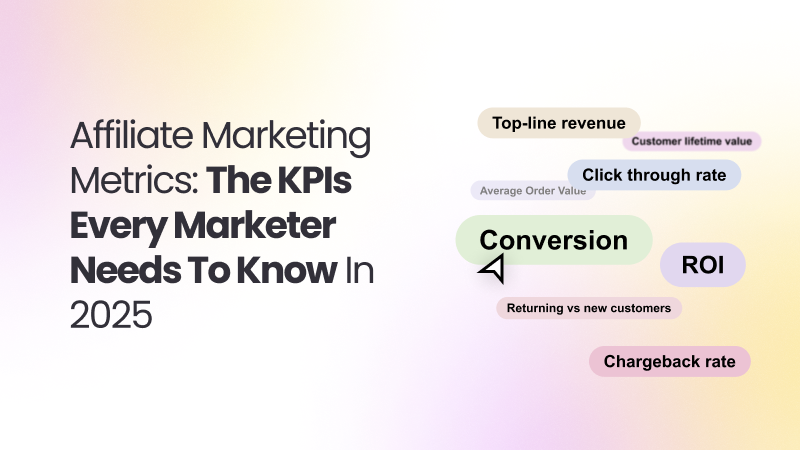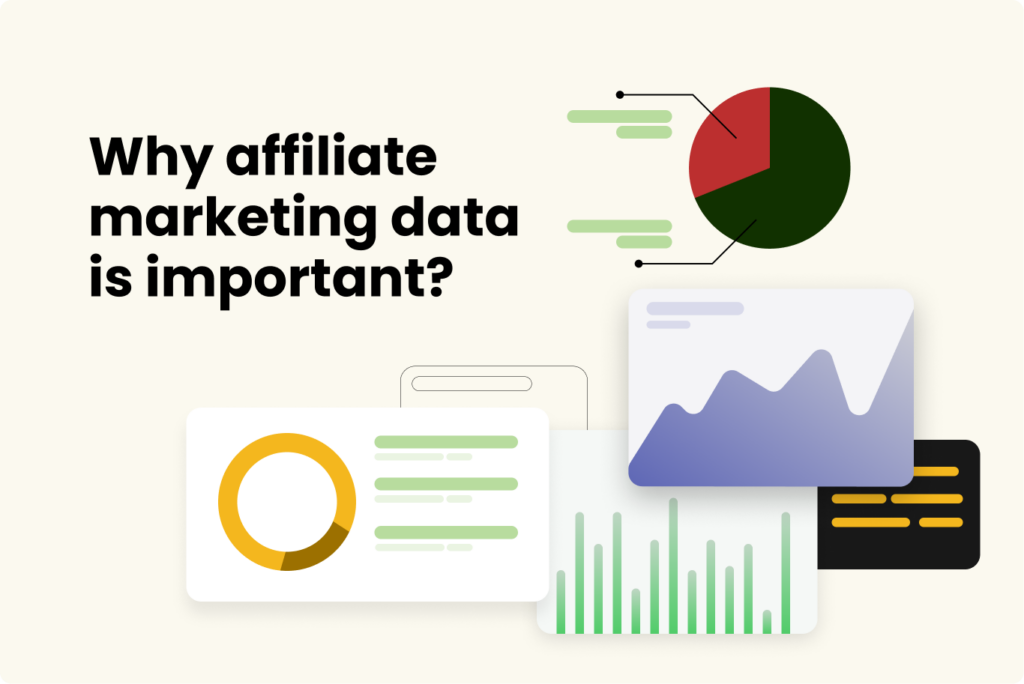
Establishing a new partnership with a new affiliate is one thing. It can be fun, easy, and exciting for both the influencer and the brand. But performance tracking, managing, and measuring success is a different story. KPIs like ROI, CTR, and CLV are important for understanding the successes and opportunities of every campaign, but what do they mean? Let’s dive in.

In 2022, it was reported that 80% of marketers said that their affiliate marketing program strategies would become significantly more critical to revenue generation for their businesses in the coming year.
In addition, according to Forrester Research, most affiliate advertisers state that affiliate marketing strategies bring in more quality prospects. More than half of these marketing professionals state that programs like these foster brand loyalty and boost performance transparency in the organization.
To reach a level of significant revenue generation, businesses need to track the proper affiliate marketing KPIs. It’s crucial to know what’s working and what isn’t, and data will help you get there. The numbers also help you motivate and foster the best long-term relationships with your influencers.
As the e-commerce industry continues to grow, the revenue generation opportunities through affiliate marketing strategies grow with it. Consumers are now more tapped into purchasing through social media platforms than ever before, and partnering with the right influencers is the key to getting the right content out there and increasing conversion.
According to the Influencer Marketing Hub, the affiliate marketing industry has grown by 83% since 2017. By the end of 2024, they estimate that the global affiliate marketing spend will reach $15.7 billion.
Over half of that total affiliate marketing industry spending was accounted for in U.S. dollars. In the United States alone, advertisers spent 62.7% of the total dollars in 2017, and that number was expected to rise to close to $10 billion by mid-2024.
At the end of the day, top-line, total, or gross revenue is the aim of all marketing strategies and partnerships. It’s how a business tracks what affiliates are bringing in to get a sense of how they’re doing and how lucrative the partnership is.
To understand what the potential revenue could look like, visit the influencer’s website and social media platforms. What does the customer journey look like? What do you think works, and what doesn’t? Influencers who have a dedicated or easily accessible place for their affiliate links are much more likely to generate revenue than those who have websites that are difficult to locate or navigate.
Conversion is the percentage of viewers or visitors who turn into actual customers. You’ll need an affiliate marketing program with a comprehensive dashboard to access this data.
When you have your conversion number, do some market research to determine what’s typical in your industry and whether or not your affiliates are over or under-performing. You can then discuss their performance with them and review ways to support them and counteract any issues.
Once you have a handful of affiliates, you can compare them and ask your top performers what’s working for them. Any feedback is good feedback, and can ultimately help you raise and keep conversion consistent.
This KPI is straightforward and important. The click-through rate (CTR) records how frequently each link is clicked. Again, you can measure your average CTR with the benchmarks for your industry and loop back with your affiliates on how things are coming along.
If you compare your CTR with the number of sales your site generates (earnings per click), you’ll better understand how each affiliate is performing and how your relationship is trending.
Your return on investment, or ROI, is derived from your total revenue divided by the price you pay to set up your affiliate program. These costs could include things like commission, affiliate program software, or anything else you need to pay for to run that part of the business.
If the resulting figure after calculating is $1, it’s essentially a zero return, meaning you spent a dollar and made your dollar back. So, in most cases, you’re looking for an ROI above $2.
ROI is a great KPI for measuring the efficiency of your spending. Affiliate marketing should be a more passive income stream, and a cost-effective software tool and a fair commission structure should set you up nicely.
Customer lifetime value (CLV) helps marketers measure an affiliate campaign’s ability to foster lasting loyalty from customers. CLV refers to the total revenue a business can expect to generate from a particular customer throughout their relationship.
The CLV can be calculated by multiplying the average revenue per user (ARPU) by their loyalty lifespan. Affiliates associated with customers with a higher CLV likely do a better job with branding, messaging, and could make some of your most important partnerships.
The average order value (AOV) represents the average amount customers spend in each transaction. This metric is calculated by dividing the total revenue generated by the number of orders in the same time period.
Marketers should compare their average AOV with their affiliate AOV to better gauge the campaign’s effectiveness. If the affiliate AOV is significantly higher, it could indicate an ability to upsell or add-on. There are great Shopify apps available that can help with upsell and cross-sell popups to keep your AOV as high as possible.
It’s pretty straightforward, but returning vs. new customers is a data point covering the percentage of first-time buyers compared to repeated shoppers. This metric highlights how many loyal customers an affiliate brings in and how much they contribute to new traffic.
The chargeback rate gives information about the quality of the traffic an affiliate is generating for your brand. A reversed sale rate of more than 10% will likely indicate that your affiliate might not be advertising to the right audience or might be overstating the product features.
Make sure you’re aligned with your affiliates about your brand messaging, product offerings, and who your audience is so they can do a more accurate job with the content and maintain a great chargeback rate.
Measuring the appropriate KPIs for your affiliate marketing campaign is made easy with the proper tooling. Simple Affiliate is a user-friendly affiliate marketing tool that allows you to get started, track and manage your affiliates, and earn revenue quickly. No coding experience or technical expertise is required, and payouts are easy and automated.
Ready to start or scale your affiliate marketing program? Book a demo with Simple Affiliate today.